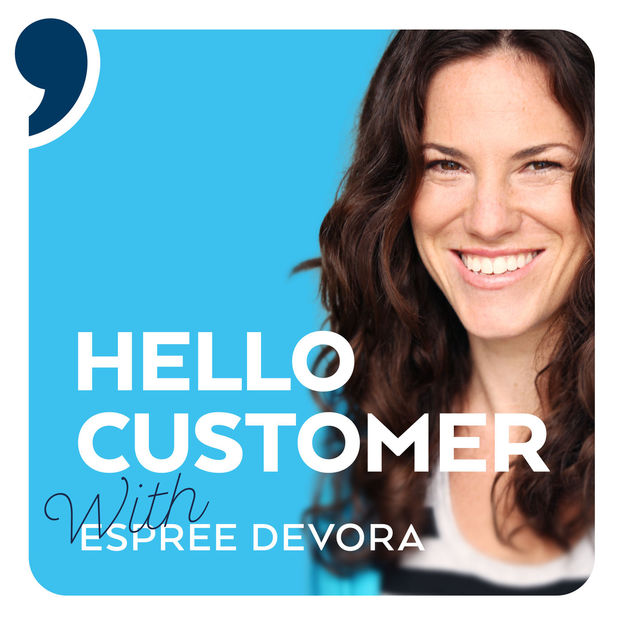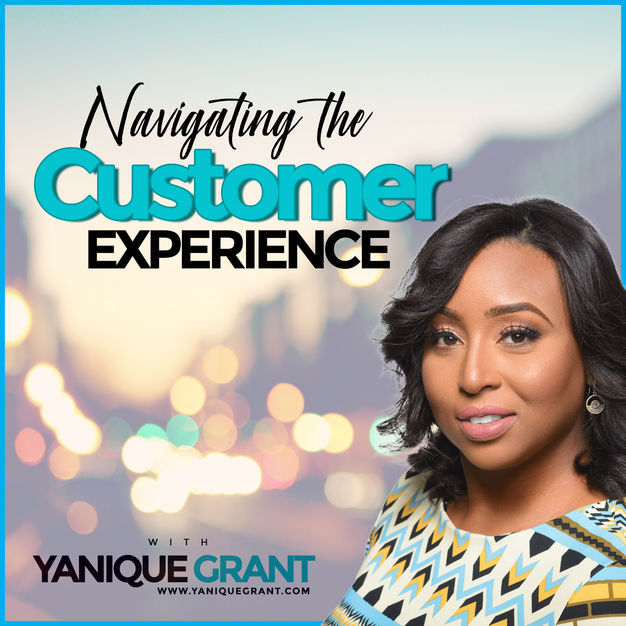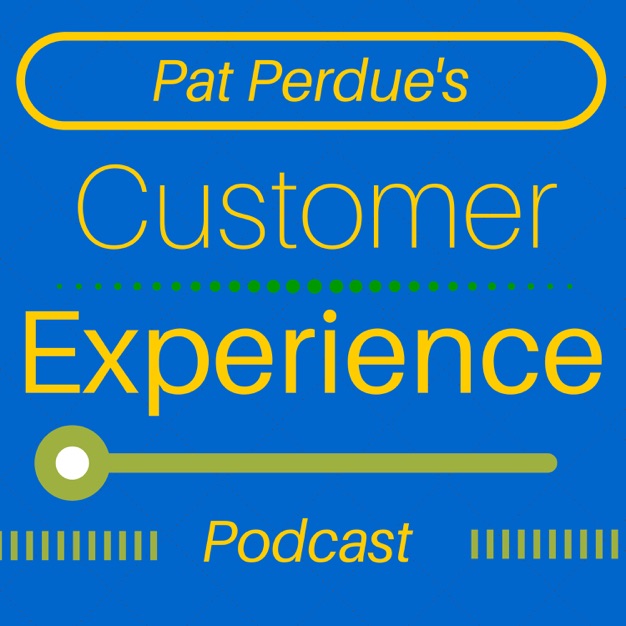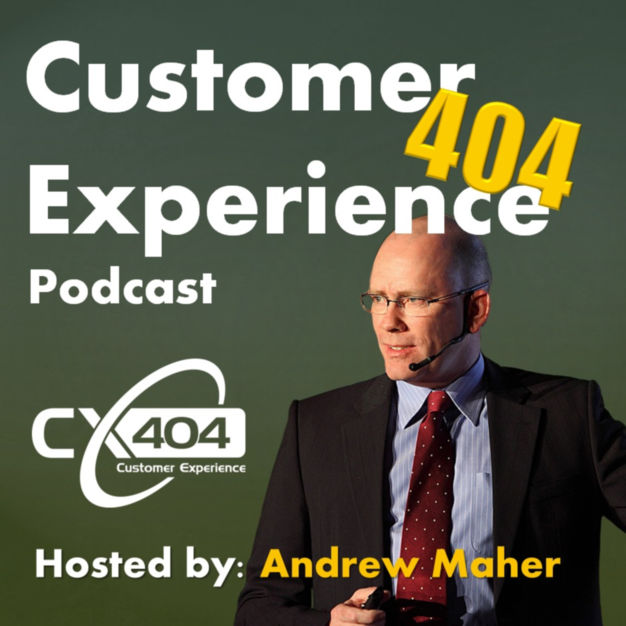
Hello Customer, a Podcast About Delivering Extraordinary Customer Experience
Espree Devora & Leslie Cottenjé
Why should you invest in truly knowing your customer? What's the benefit of being customer-centric as an organisation?
- 23 minutes 10 secondsSTOP THE FALSIFIED CUSTOMER EXPERIENCE - VIDI CAMERAS
ViDi founder Tanner Yarro witnessed a scene while leading a youth trip that forever changed the direction of the ViDi brand. When one youngster, McKinley, was teased and laughed at for having an inexpensive, “off-brand” action camera, Yarro saw an opportunity. Why not split the profit margin of the basic action camera business model with the end consumer, and make the cheaper brand “cool,” with the help of pro athletes who are often no strangers to low income upbringings?
ViDi soon found their ideal supplier, developed a printing technique allowing customized camera cases -- thus marrying action and tech with fashion and style -- and started connecting with audiences. It was also important for Yarro to provide an excellent customer experience right out of the box. Frustrated by other brands that require expensive add-on products to even function at a basic level, ViDi does things differently with $99 ready-to-go cameras that are more easily accessible.
Instantly connecting with youth through events like a flashmob skate contest, trade shows, and handing out T-shirts (and cameras to a lucky few) at concerts, ViDi and its brand ambassadors create relationships with youth that last. Even if it’s as simple as a “great job” comment on an Instagram post, it’s the human-to-human connection that helps ViDi “remember the why.”Key Takeaways
- ViDi founded to solve the problem of the “upsell” with other action
cameras - they aren’t ready to use out of the box but require
expensive add-on products. - Founder Tanner Yarro witnessed a kid being made fun of because he had
an “off-brand” camera; it inspired the lower price point of ViDi but
with branding that could make it cool for kids. - Many professionals in sports like skateboarding empathize with a
lower income upbringing and are helping to promote the brand. - ViDi developed the printing technique to customize the cases of the
cameras, and teams up with local artists for fresh designs. - “Your pre-order is your vote” so they aren’t stuck with excess
inventory. - Flashmob skate competition helps connect the brand with kids, giving
cameras as prizes and connecting kids to pro athletes. - Brand ambassador program involves mentoring kids through social
media. - Because the designs are custom, ViDi is growing fan base in varied
arenas (from skate parks to Korean pop). - Goal for the future: fully customizable designs for individuals.
- Connecting with individual consumers and maintaining relationships;
founders connected with teens at a trade show and continue to text
and mentor them.
16 December 2015, 4:00 pm - ViDi founded to solve the problem of the “upsell” with other action
- 14 minutes 39 secondsAfends - Customer service via Live Chat in e-commerce - Hello Customer Podcast / Season One / Fashion
In the first episode of the Hello Customer Podcast, Espree interviews Cassy Miller-Crispe on how Afends provides customer support through live chat and integrates the community and its customers with the brand. Tune in to get a sneak peek into Afends’ plans to take its customer service to the next level and how it is working on connecting with its customers.
Host
Espree Devora, https://twitter.com/espreedevora
Guest
Cassy Miller-Crispe, Marketing and Customer Care at Afends.
Links mentioned:
- Afends - http://afends.com
- Afends on Facebook: http://facebook.com/Afends
- Afends on Instagram: http://instagram.com/afends
- Afends Womens on Instagram: http://instagram.com/afends.womens
Key Takeaways
- Afends has integrated its philosophy of ‘Question Everything’ into
its clothing. - Customers are everything and we want to make them as happy as we
possibly can. - Live chat is great because all the customer has to do is click a
button and ask a question. They don’t have to look for an email, a
contact number or a contact form- they can simply start typing and
get the answer instantly. - Live chat has helped Afends increase its sales, salvage relationships
as well as capture customers they would not have captured otherwise. - The Afends team is like a giant family and they back each other up.
Each team member is usually juggling 2-3 different roles. - Afends is looking to start a zine for their customers to update them
and make them feel connected with the brand. The zines will be sent
out with orders and also stocked in stores which carry Afends. - Afends is very agile and has managed to find a great balance in
becoming a large company without the usual blocks in decision-making.
9 December 2015, 4:00 pm - 18 minutes 23 secondsCustomer First @ Volcom: from sports brand to popular culture
The quest for spiritual intoxication… No, it’s not a cult. It’s the driving force behind lifestyle apparel brand Volcom. The company started in 1991 with a passion for surfing, skateboarding, and snowboarding, and they continue to convey just how strongly these sports are intertwined with self expression.
When it comes to customer experience, Volcom positions itself as a brand that supports athletes from the smallest -- and youngest -- levels all the way up to the top. With their Let the Kids Ride Free programs, the brand tours the globe hosting contests for snowboarders with no entrance fees. Giving youth the chance to experience camaraderie with each other, meet their snowboarding idols in person, and gain confidence on each course is the priority. In fact, Volcom marketing representative Brandon Janssen was once just a kid in Minnesota, who grew up with the competitions and developed such a strong relationship that it evolved into his career.
Volcom invests in young athletes, and connects personally with many of the faces they meet along the tour year after year, like Benny Milam, a snowboarder from Minnesota that started as a kid with basic tricks and is now so advanced he’s on the amateur Volcom team. Across the board, Volcom doesn’t shy away from the small action, but instead, embraces it. It’s the little moments -- the “Hey, want a hat?” or “Wow, that contest was so fun” -- that lead to big-time loyalty.Key Takeaways
- From the get-go Volcom has been a supporter of music, film, and art
because they see their board sports as a different form of
self-expression. - The brand positions itself as “spiritual intoxication,” supporting
the journey of board sports and helping consumers feel connected to
the earth. - In 2000 they hosted their first contest at Mammoth Mountain, and it’s
grown into a global tour of contests and events. - The Let the Kids Ride Free contests offer a chance for young athletes
to meet their pro heroes, develop camaraderie with each other, get
competition experience, and gain confidence. - Kids growing up with the Volcom events develop brand loyalty (like
Brandon, who started as a youth competitor and now works for the
team).
2 December 2015, 4:00 pm - From the get-go Volcom has been a supporter of music, film, and art
- 37 minutes 49 secondsOsiris - 'Thinking outside the shoe box', Listening to connect with customers - Hello Customer Podcast / Season One / Fashion
For Brian Reid, founder of Osiris, incredible sneakers are not a commodity. Each pair is a piece of art. And to continually find inspiration for his art and craft, he travels the world, watching, listening, and most importantly -- skating. It’s the only way he has discovered to stay true to the “16-year-old” at heart so he can continue to connect with his customers even at age 40.
The beginnings of the 20-year-old brand were humble, built on the trust of a small, founding team, and a “just go for it” mentality. There to help build a solid foundation was a trusted advisor, thanks to one of the founders’ family members. Even so, Reid knows that every company has a honeymoon phase and should be prepared for the slump that inevitably comes after several years as the hot new thing. There will always be a next hot thing after you, so as a brand you have to be prepared, ready to find new ways to stay fresh.
It is storytelling and necessity that intersects with each Osiris design, like the stash pocket created for professional skaters constantly on the go, or the collaborations with local artists to express themselves with very few limitations. And to keep the brand accessible, Osiris doesn’t shy away from big box retailers like Journeys or Zumiez. Keeping contact with consumers is a higher priority than buying into any myths about big-box stores being completely impersonal; in fact, Reid has been able to work closely with top leaders of these stores and “cool buyers” to make quick, smart decisions together and better understand the user.Key takeaways
- It takes a great team to build a great product: Brian Reid credits his four partners and a savvy mentor at the start.
- Every brand has a honeymoon phase - founders can age but their
audience may not. Stay fresh by understanding the individual
customer. - If you want to stay 16 at heart, don’t let age stop you from activities you love -- and let those things speak to the products you create.
- Starting with lower expectations can lead to great business decisions
and outcome. Let the right people dictate the direction. - Create a product that creates community; brings different people
together with common passion instead of treating the product as as
commodity. - Necessity leads to great ideas = stash pocket.
- Great design through storytelling; letting local artists create
designs without any input or judgment from the business. - Trend forecasting and traveling + quick execution keeps ideas fresh.
Brian can design while traveling, and have a prototype ready when he
returns. - Bigger chains being oblivious is a myth; they also need market
research and forecasting and have “cool people” as buyers.
25 November 2015, 4:00 pm - 27 minutes 4 secondsMeUndies - Creating intrigue to skyrocket becoming a top brand - Hello Customer Podcast / Season One / Fashion
As a company that has to talk to people about their underwear (awkward), customer experience is at the tip-top of the priority list for globally growing brand MeUndies. How do they keep it lighthearted and memorably awesome?
To begin, every step of the MeUndies customer experience has a real-life person associated with the communication. From their noteworthy billboard campaigns -- who is Jen? -- to their fashion shows and pop-up shops, to customer service representatives who are all “obsessed” with MeUndies, the brand has intentionally moved away from efficient yet overused robot-like interactions to more authentic, customized experiences.
They not only fulfill their 100% satisfaction guarantee, but take extra steps to show that they actually care about each customer’s comfort. One client liked the undies but had a phobia of the color purple (also the color of the undies’ waistbands) -- full refund. Another just didn’t love the undies, so they gave him a refund and sent him a Starbucks card to “treat him to a cup of coffee.” The team has even started sending out care packages for MeUndies customers who might need a pick-me-up.
And at the center of every piece of branding and interaction? Finding style that’s comfortable, customizable, and efficient. Catering to a “want it now, want it my way” generation, MeUndies is making sure to present their subscription-based service in a way that encourages individual style. Collaborations with local artists for the Design of the Month undies arrive with a free gift in a “cute little bag.” Customers hit “subscribe” for no-hassle purchasing and can expect personalized service and a high-quality product, in total alignment with their desire for cooler style with less fuss.
Key Takeaways
- Origin of the brand: Solving a specific problem and building a niche.
Why should consumers still have to go to a department store to buy
nice underwear? - Consistency throughout customer service is key; from billboards to
Facebook ads to in-person events, the voice of MeUndies remains
personal and keeps everything lighthearted. - Who is Jen? MeUndies has created intrigue a cool-girl persona that
they use to brand campaigns and communications. - The nerd is hot! From glasses frames to undies, MeUndies understands
that today’s young professional, in tech, start-ups, etc, want high
quality items delivered with equally high efficiency. - Everyone on the MeUndies team is “obsessed” with MeUndies. They do
whatever it takes to help a customer out, from refunds to sending
care packages to customers in need. - Facebook is a favorite platform because customers represent
themselves, and aren’t hiding behind a username. They host caption
contests to drive engagement. - The team feels like a family with flexible scheduling, happy hours,
and a group attitude of “lifting each other up.” - Fashion is what you buy, style is what you wear. The goal is always to help customers find and enhance their personal style.
18 November 2015, 4:00 pm - Origin of the brand: Solving a specific problem and building a niche.
- 24 minutes 50 secondsElement - Do well by giving back (and being an environmentally conscientious brand) - Hello Customer Podcast / Season One / Fashion
Growing up in an urban environment in a difficult household, Element founder Johnny Schillereff discovered comfort in the artistic expression of skateboarding and other street culture. Emerging as a successful skateboarder and artist, he found himself bombarded with branded items and gear. He intuitively sensed that if he were to have a company, he would treat the branding a little differently. He received all this stuff, but what did it mean? What were they trying to say and who were the people saying it?
With that foundation, he built Element as a brand not just to sell products, but to spread a new spirit and lead a youth movement of positivity and accepting that the “impossible” can be overcome. With mega success, the down-to-earth founder still maintains that it’s the in-person conversation, the “human touch,” that gives him fuel to continue to work hard for the business day after day and keeps consumers connected to the brand.
Element has a major focus on youth improvement, both through Element skate camps and through contests run through nonprofit Elemental Awareness. Always connecting nature and street culture, “from kickflip to campfire,” the team introduces youth to nature in a way they might not have access to otherwise, and gives them a behind-the-scenes look at big dreams with tours of the Element headquarters.
It’s not about big numbers or scaling fast, for this brand. The best business books for success, according to Schillereff? “The Alchemist” and “Way of the Peaceful Warrior.” Constantly strive to be a better person, and business will inevitably grow.Key Takeaways
- New brands are typically a reflection of who the founder is or who
they’d like to be. How can you send a message you’re proud of? - Establishing a brand not just as sales, but as a movement. Element represents a positive youth movement. “We’re not perfect but we want to try and make the world a better place.”
- Elementality = a way of thinking. Positive thinking, loving what you
do, and surrounding yourself with people you love to spread that
power and energy to others. - Element start skate camps to combine the peace and zen of the
outdoors with the peaceful self-expression of skateboarding.
Elemental Awareness nonprofit introduces youth to nature and
skateboarding as an outlet and success building. - Other outlets for youth engagement: Make It Count contests that
require canned food donations for entry, tours of the Element
headquarters where kids get to see behind-the-scenes and meet and
talk with staff. - Everything -- ink, logo, fabric -- should send a message. Using the
platform for good and sending a positive message to consumers through
every piece of the product. - Take the technology out of the experience with in-person drop-in
visits to stores and consumers. Being at skate parks is a better
consumer learning experience than any other stats.
11 November 2015, 4:00 pm - New brands are typically a reflection of who the founder is or who
- 24 minutesLevi's - Creating popular collections based on Customer Feedback & Co-creation
When a company is as established as Levi’s (founded in the late 1800s), they have to continue to please generations-loyal customers and solve new problems for younger jean-wearers. With each initiative of marketing and product development, Levi’s ensures customer satisfaction by hitting the ground, listening, and learning from the consumers in their markets.
Skateboarding? They created an ultra-durable pant that doesn’t look flashy, based on feedback from skateboarders and skateshop owners around the globe. Stretchy-but-not-saggy fabrics, double layer pockets, and specially sewn belt loops are just a few of the features that set the pants apart. To send the message of their commitment to skating, the company helped build new skateparks and continues to give hands-on support to communities all over the world.
Commuters? When Levi’s team members realized how inconvenient it was to have to change into and out of different clothes when they commuted by bike to work, they developed the Commuter Line, with extra durability and stretch -- again, still looking like the standard Levi’s jean -- to accommodate this energy-efficient mode of transportation.
Sending the message of practicality, community support, and high-quality, Levi’s also launched pop-up workspaces for a month at a time in various cities. Offering free tailoring, bike tune-ups, wifi, coffee, and workspace in each city developed quick rapport with consumers -- once they were able to stop asking, “Wait, it’s free?”
Ultimately, each product and marketing concept begins not with a design or a bottom line, but by understanding the person who will be wearing that pair of jeans.Key Takeaways
- Finding people passionate about the same causes as the brand and
supporting them. Levi’s helps build skateparks around the world and
hosts events but doesn’t slap their logo on every piece of
construction. - When a company’s been around since the 1800s, the product will mean
different things to different people. From miners to rappers to
skateboarders, durability and quality speaks across boundaries of
interest. - Dig into the roots before launching a new product: Levi’s traveled
around the world talking to skateboarders and skateshop owners
learning their pain points. - They’ve developed the umbrella social hashtag #supportskateboarding
so that their work in different parts of the world can still be
linked together. - Commuter Line was born from the Levi’s team who rode bikes to work
but couldn’t find a comfortable, durable pant. They added in stretch
and reinforcements while maintaining the regular “jean” look. - Pop-up bike events with temporary workspaces, free wifi and coffee,
bike tune-ups, and tailoring provide value for Levi’s customers (and
potential customers) in large cities around the world.
4 November 2015, 4:00 pm - Finding people passionate about the same causes as the brand and
- 21 minutes 4 secondsZappos - Delivering WOW to customers
In this episode of the Hello Customer Podcast, Espree interviews Rob Siefker, the Senior Director of the Customer Loyalty Team at Zappos. He is based at the Zappos’ campus in downtown Las Vegas. The Customer Loyalty Team (CLT) at Zappos is a team of 650+ employees who handle customer calls, answer emails and live chats and provide other kinds of support for customers.
Zappos is a service company
Rob talks about how Zappos is a service company at the core even though they sell apparel, shoes and handbags. For the CLT, each interaction with a customer is about creating a personal connection with the customer and not about a transaction. Rob shares a great story about how on his second day, he was assigned a desk and told to ‘just wow the customer’.Key Takeaways:
- Zappos is primarily a service company dedicated to wowing the
customer. - The CLT aims to create a personal connection with customers.
- The ten core values of Zappos have greatly impacted their company
culture and customer service. - The CLT can stay on the call indefinitely.
- If an employee wants to do something for a customer because they
believe it's the right thing to do, they can do it. - Zappos has an internal chat service for employees to ask each for
help if they are stuck. - 3 Actionable Points for anyone looking to start or improve a call
center: write your core values; create a fun environment; and be
thoughtful while hiring. - Hire people that are going to be a good fit for your company and end
up making a positive impact. - While hiring, Zappos looks for good people who are positive, social,
proactive, articulate and independent thinkers with a bias towards
action.
28 October 2015, 3:00 pm - Zappos is primarily a service company dedicated to wowing the
- More Episodes? Get the App
Your feedback is valuable to us. Should you encounter any bugs, glitches, lack of functionality or other problems, please email us on [email protected] or join Moon.FM Telegram Group where you can talk directly to the dev team who are happy to answer any queries.
 Navigating the Customer Experience
Navigating the Customer Experience
 Pat Perdue's Customer Experience Podcast
Pat Perdue's Customer Experience Podcast
 Improving Customer Experience
Improving Customer Experience
 Customer Experience
Customer Experience
 Customer Experience 404
Customer Experience 404